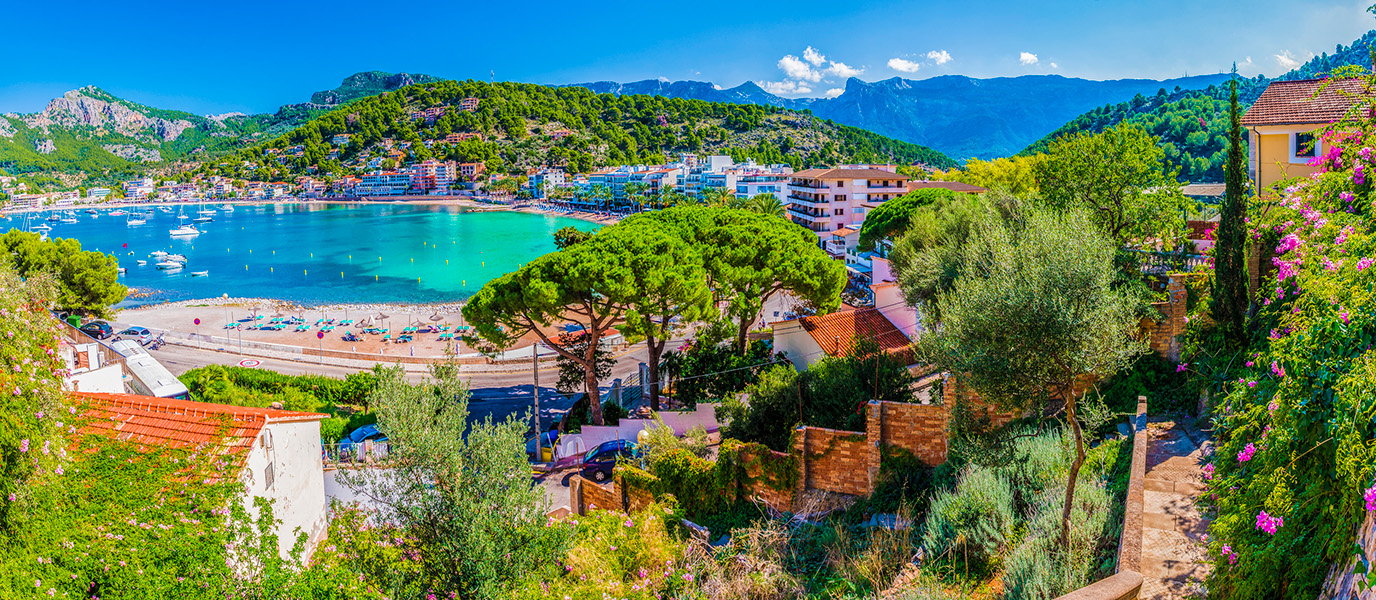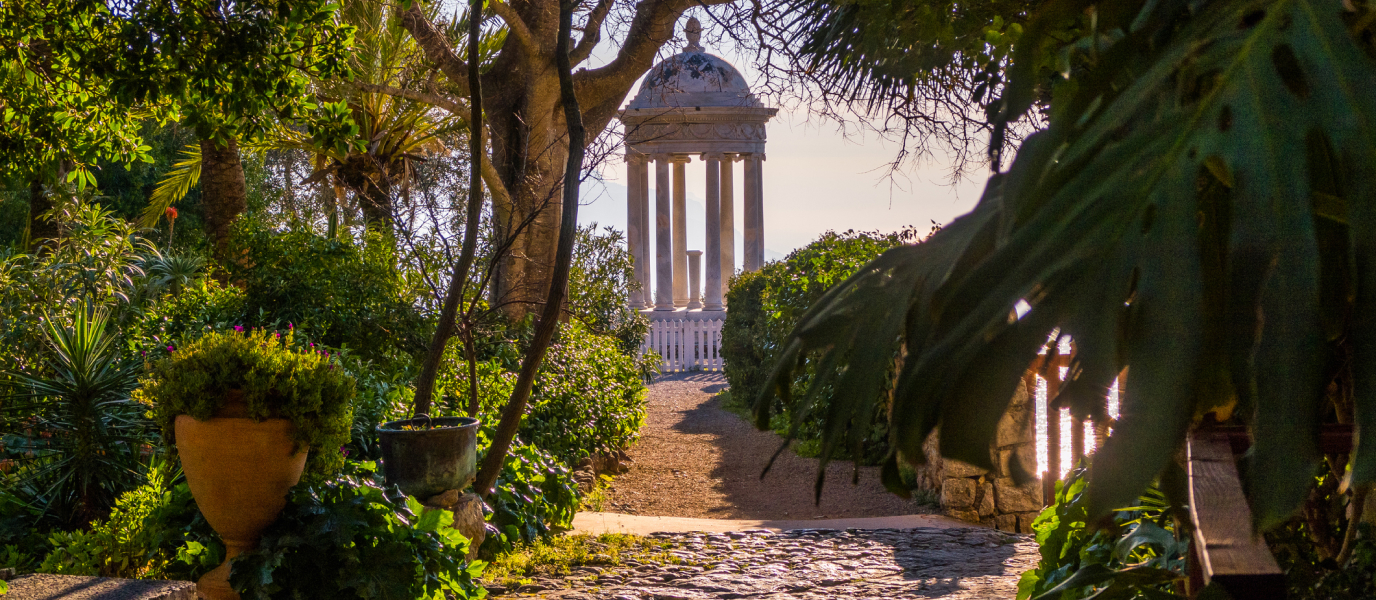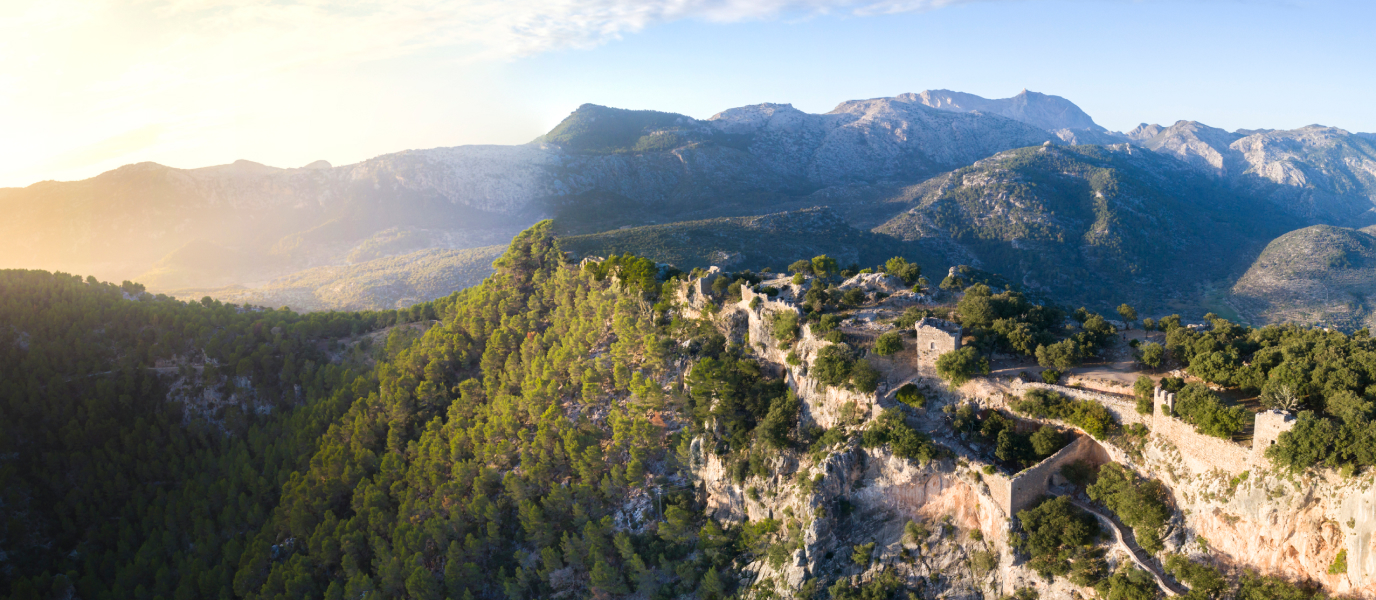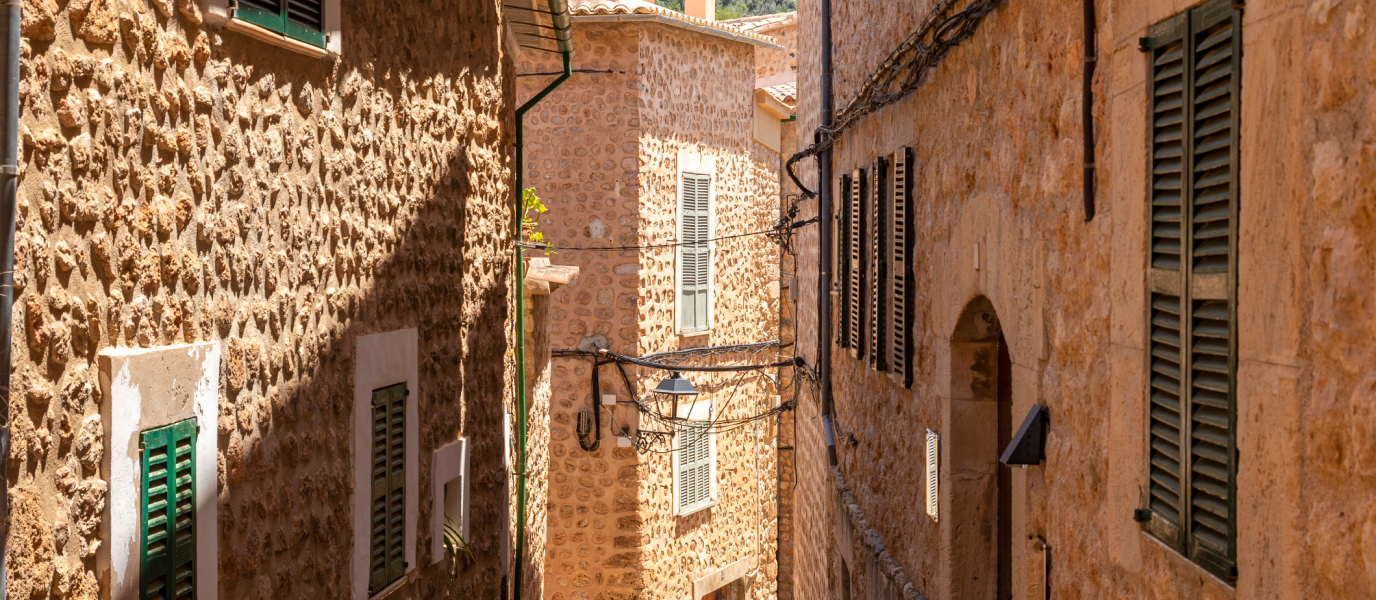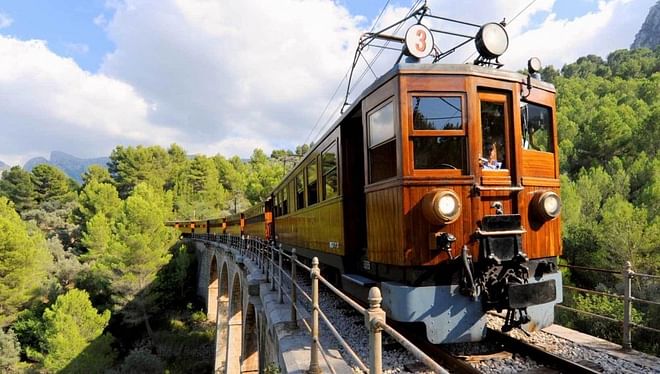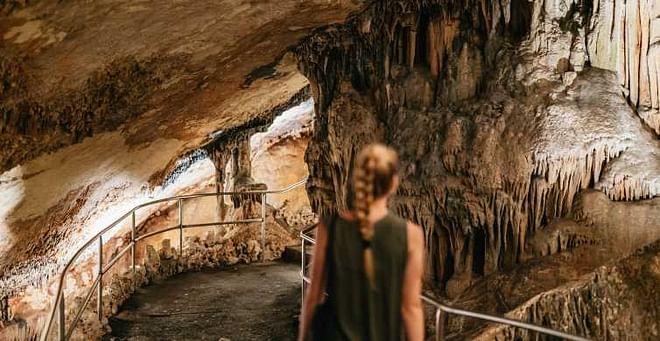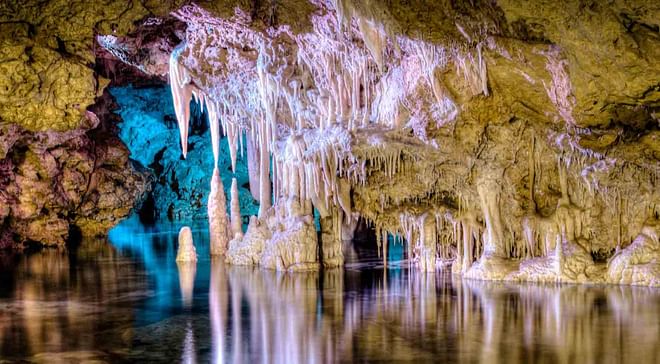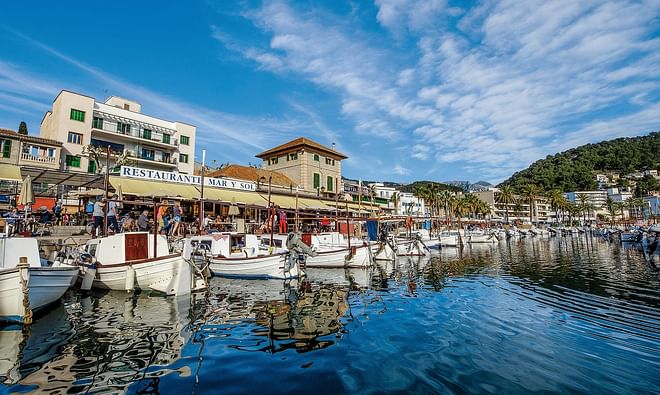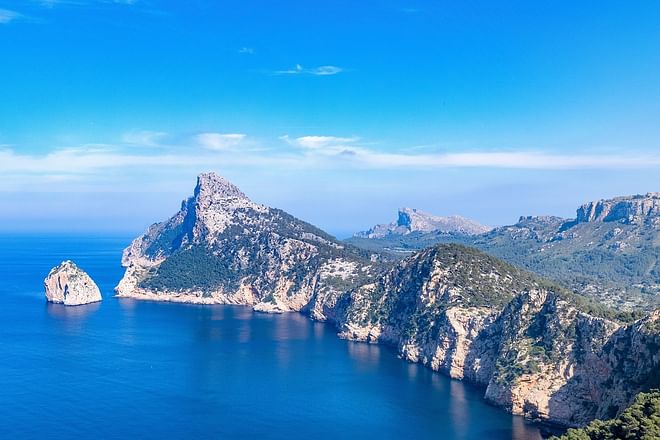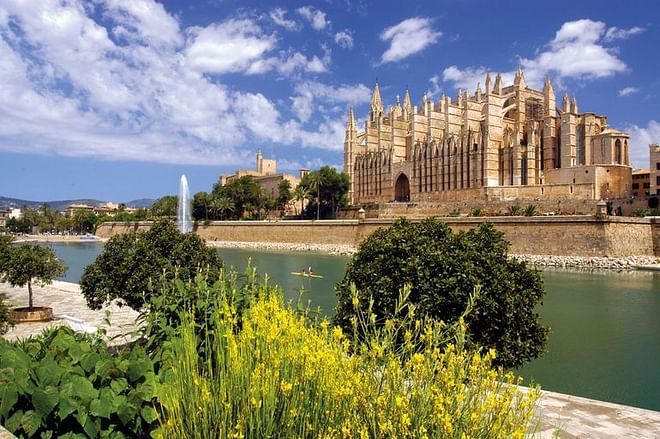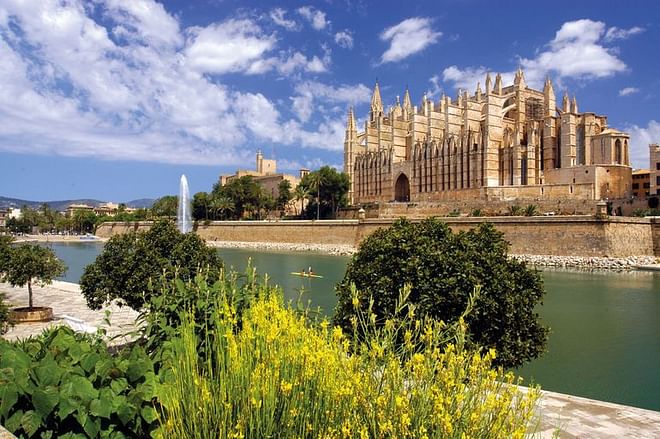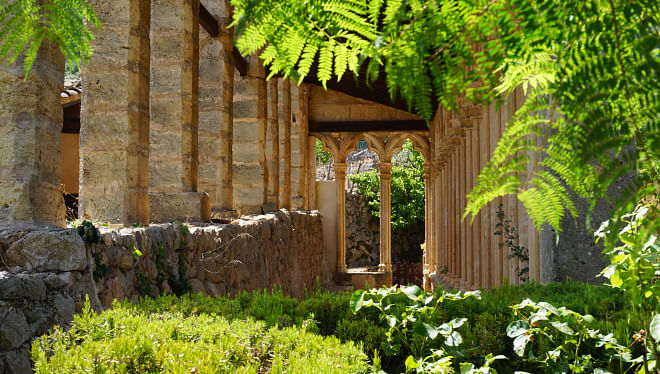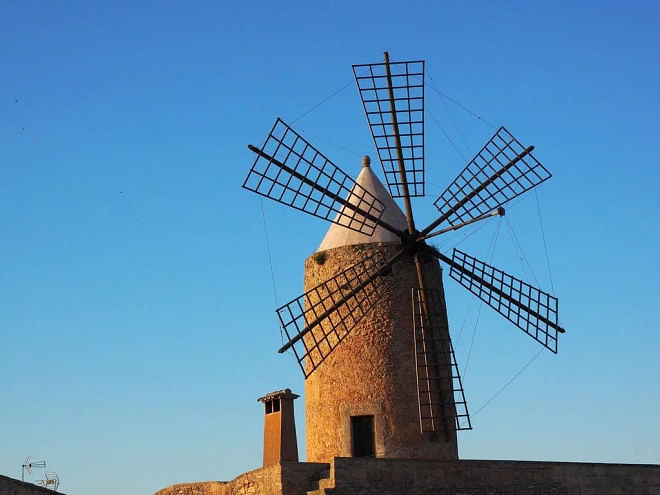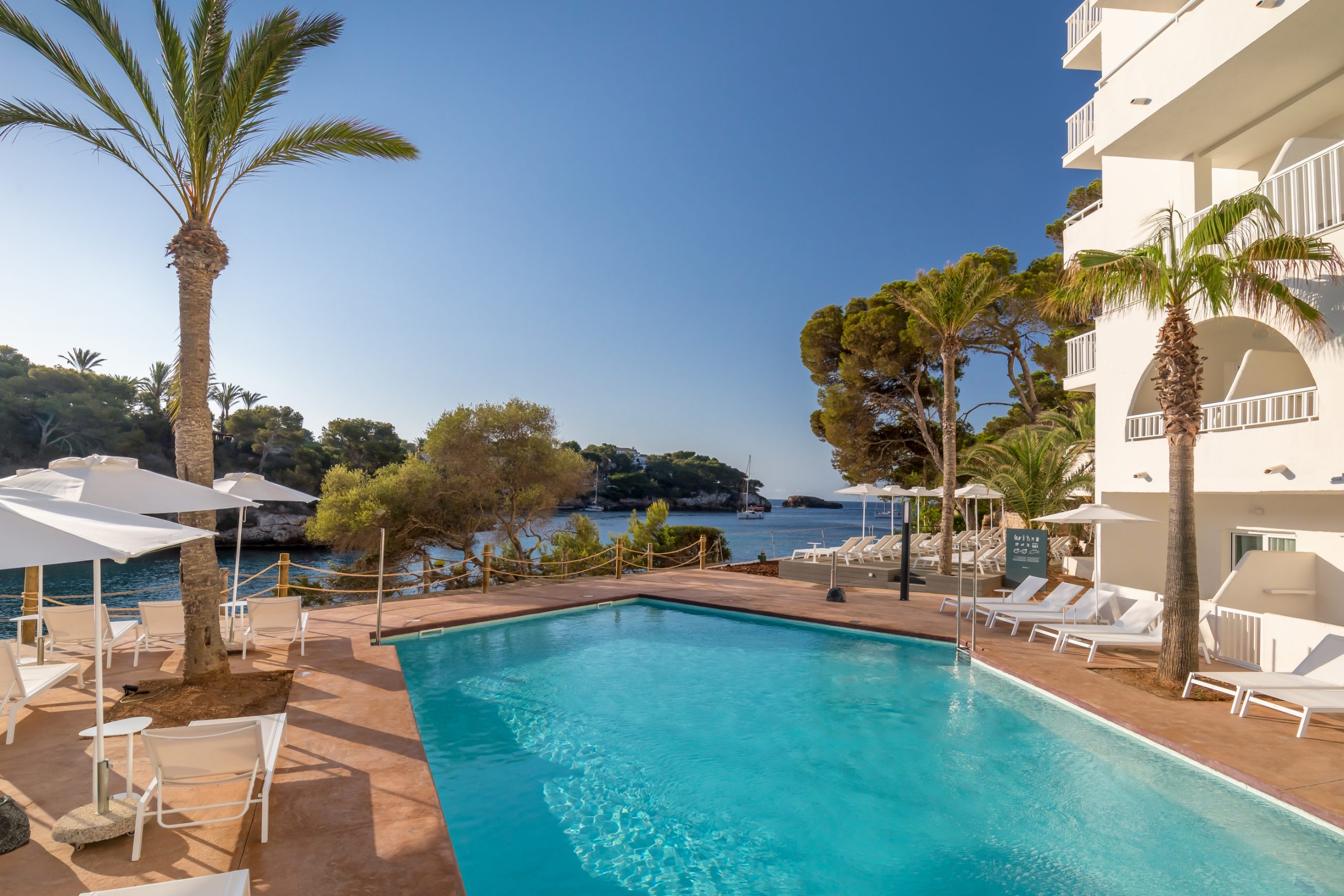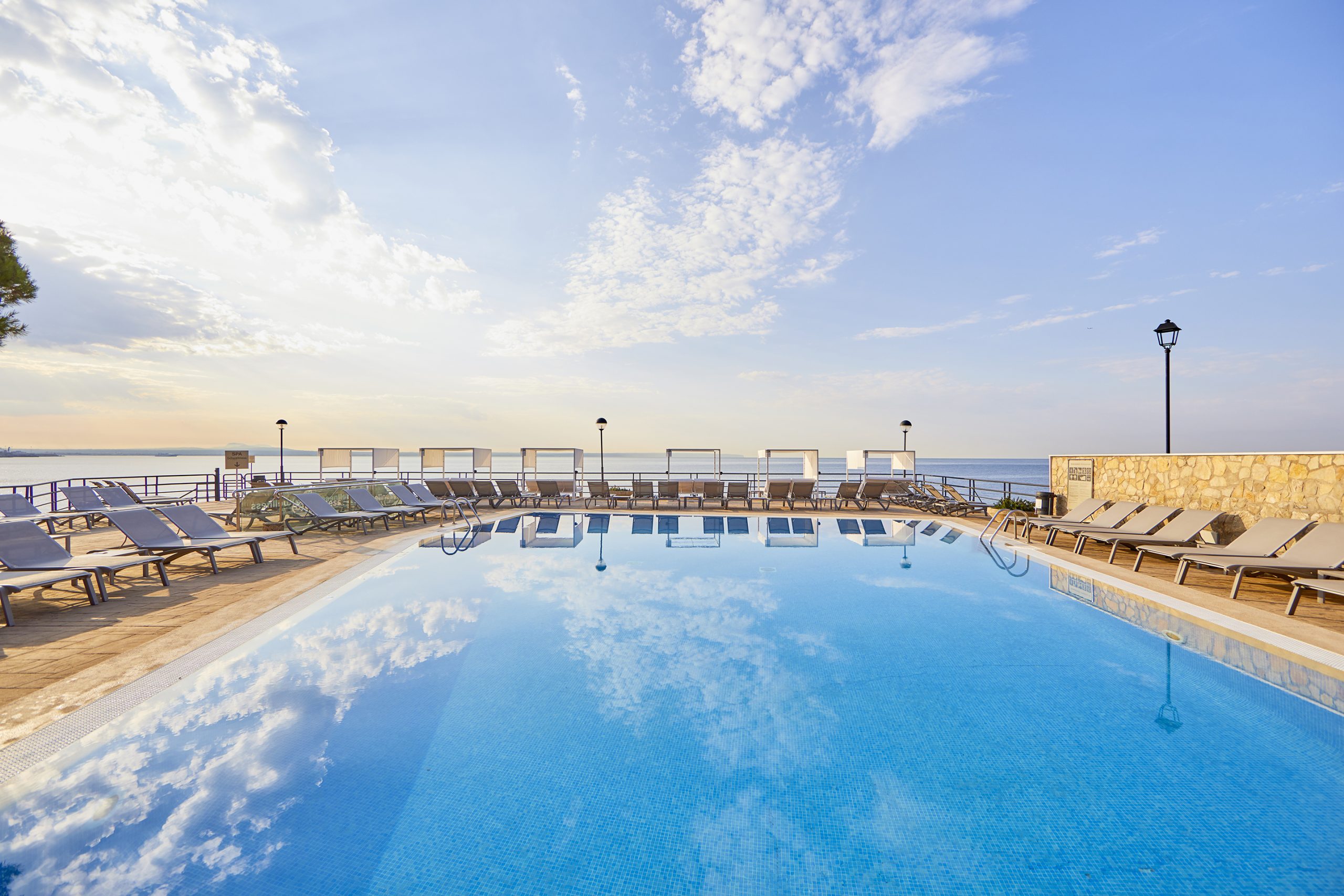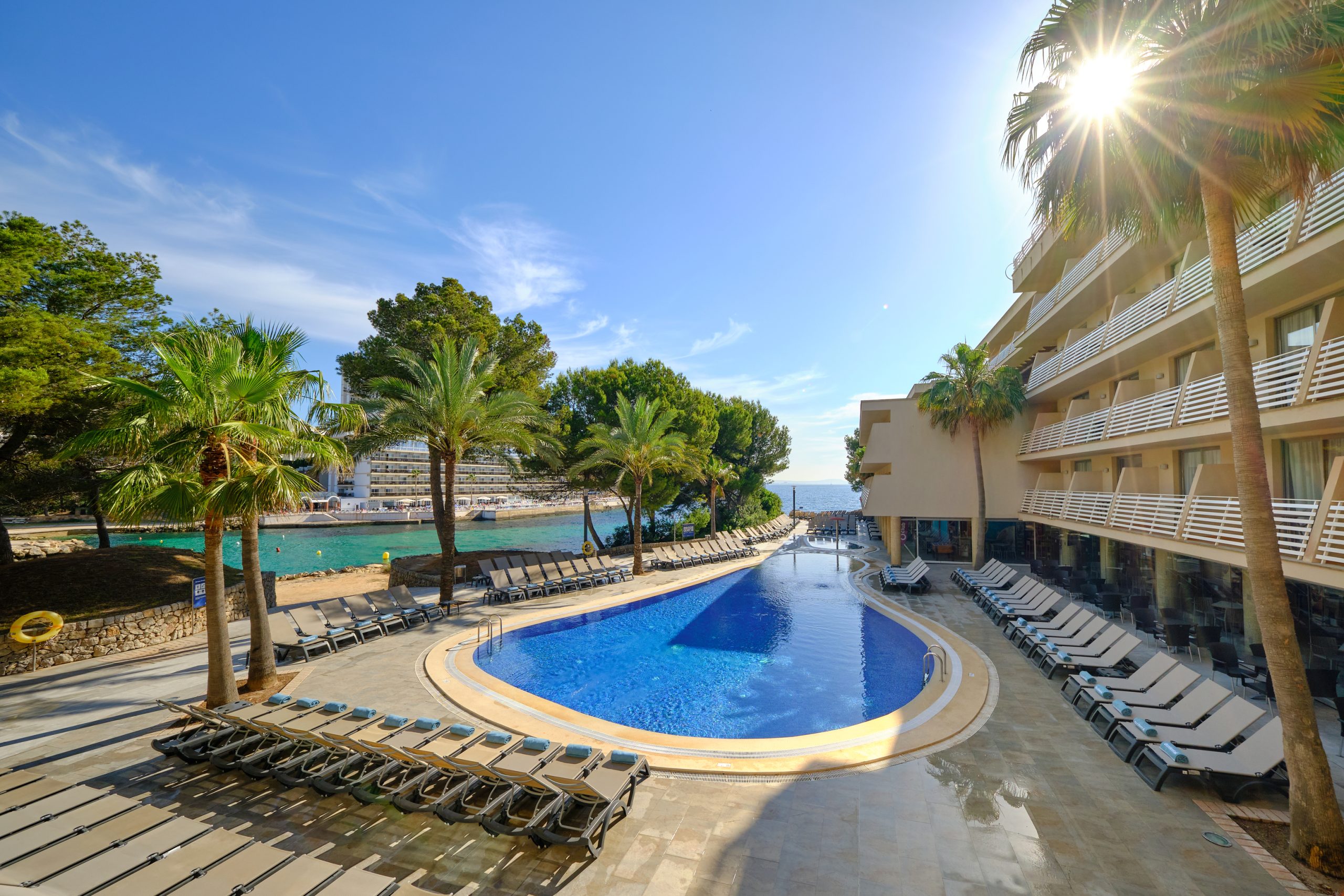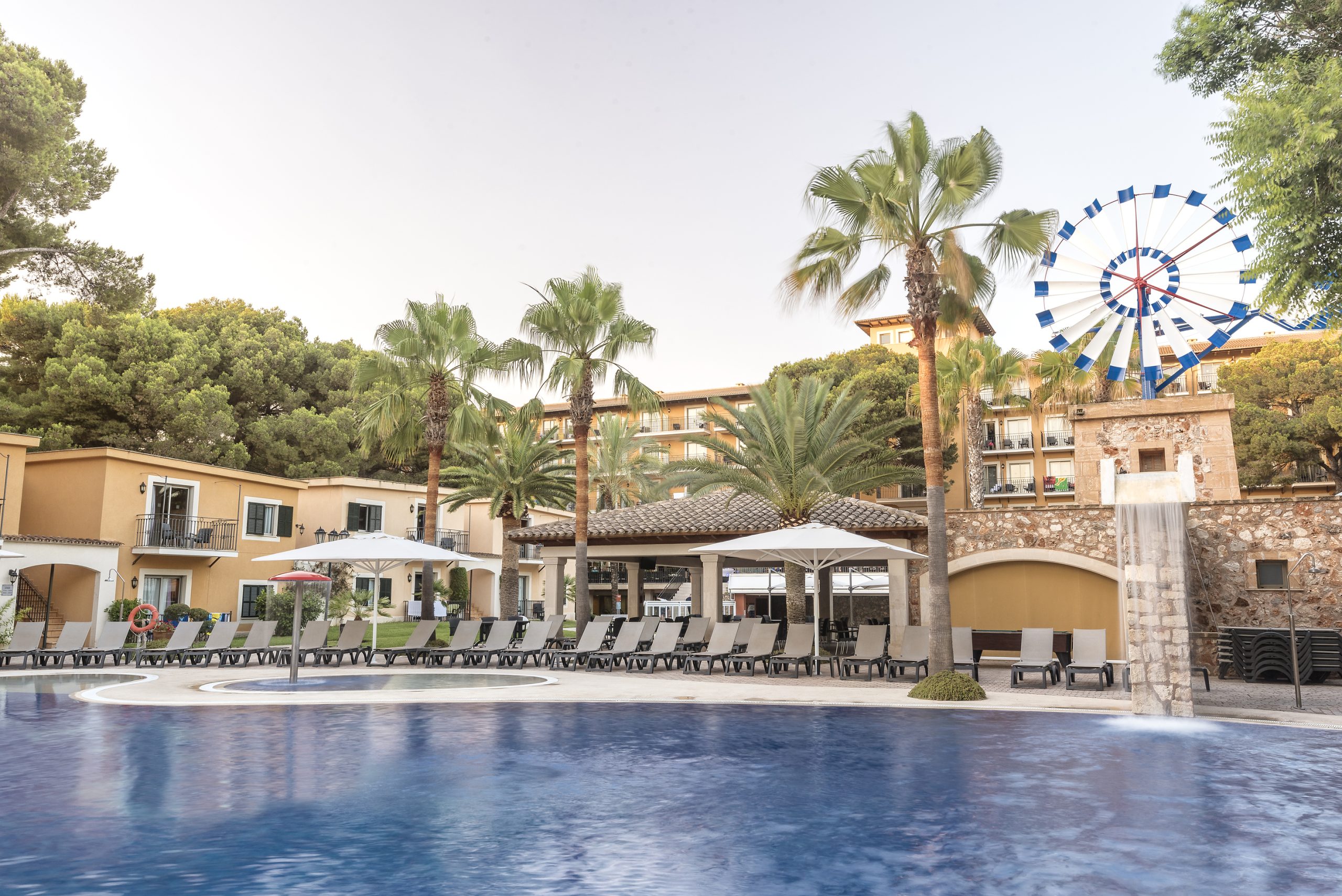Sóller is considered to be one of the most attractive towns in Spain. Just stroll through its historic centre and you will immediately travel back in time. Dignitaries such as Archduke Ludwig Salvator of Austria stated that it was the prettiest town on the island. The town’s name comes from the Arab word ‘suliar’, which means a golden bowl, a very accurate description of the fertile valley of orange groves surrounding it.
What can we see and do in Sóller?
Sóller’s architecture is characterised by Joan Rubid, a well-known pupil of Gaudí; Rubid’s main work was for the neo-Gothic church of San Bartomeu and Banco de Sóller.
Strolling through its narrow streets, you will feel the history of one of the Majorcan towns with the most flourishing past. By exporting oranges and wine to France, it began to thrive and boosted numerous businesses. In fact, because of the area’s orography, Sóller turned its back on Palma as a result of a poor communications network and focused on exports through Marseille. During a brief stroll, you will discover the Majorcan-style houses and the French-inspired palaces coexisting with modernist buildings.
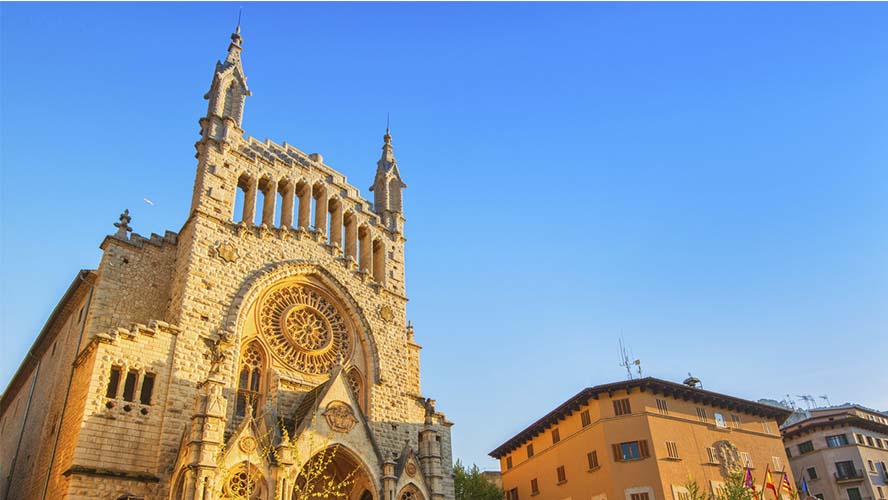
Its longest street, Sa Lluna, refers to a moon carved in stone on the front door of one of the houses. While strolling through its narrow streets, discreetly peek through the open doors to discover beautiful private gardens with pergolas, fountains and decorative tiles. There is a former public washing place at the end of the street, near the edge of the town, which is where the orange and lemon groves start. You will also find the Balearic Museum of Natural Sciences as you leave towards Palma and the Ethnographic Museum on Carrer del Mar.
The modernist essence at Can Prunera
Sóller’s modernist essence is concentrated at the modernist museum located in an early 20th century mansion called Can Prunera. It houses precious paintings belonging to the Serra art collection, and the rooms have nature-inspired sinuous shapes. The first two floors of the building are a good example of modernist decoration and interior design since part of the original furniture is still there. In the basement, there are rooms popularly known as botigues, comprising an olive oil tank, a kitchen stove, a sink and a well. The former dining room and storage rooms are now devoted to the local painter Juli Ramis. A series of sculptures are exhibited in the garden.
Sóller’s orange groves at Ecovinyassa
You can discover how important oranges are in the area at the Vinyassa orchard, at the foot of Sóller. You can stroll through the over 18,000 m2 at the foot of the Alfabia mountain range and steep yourself in the orange tree culture in a natural environment, with a special microclimate, where organic orange and lemon marmalade, orange blossom tea and candied orange peel are made.
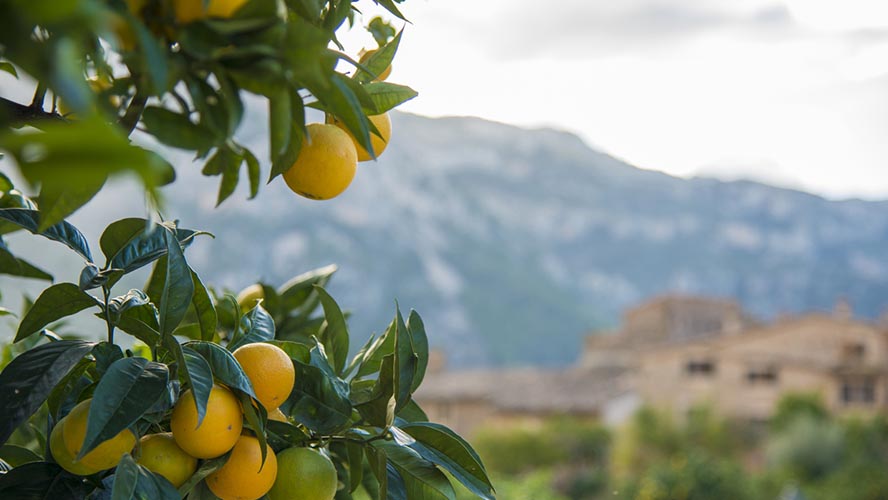
Shopping in Sóller
The Sóller city market is open every morning while the street market is held only on Saturdays at the market square (Plaza des Mercat). There is also a street market in Bunyola on Saturday mornings. They are great places to buy typical local products. If your visit does not coincide with the street markets, you can also go to the Fet a Sóller shop in the train station itself, which sells products made in the Sóller valley. In that area of Majorca, you can find traditional Majorcan embroidery, handmade footwear, wood crafts and ceramics.
At the market square, remember to enjoy a truly artisan ice cream from Majorca at the Sa Fàbrica de Gelats ice-cream parlour, where you can choose from over 30 flavours. Orange is clearly the star flavour.
The Sóller train, back to the past
The most romantic journey from Palma to Sóller is taking the old wooden train which crosses the mountains. The train station itself, with its modernist style and intact since its construction, takes you back in time.
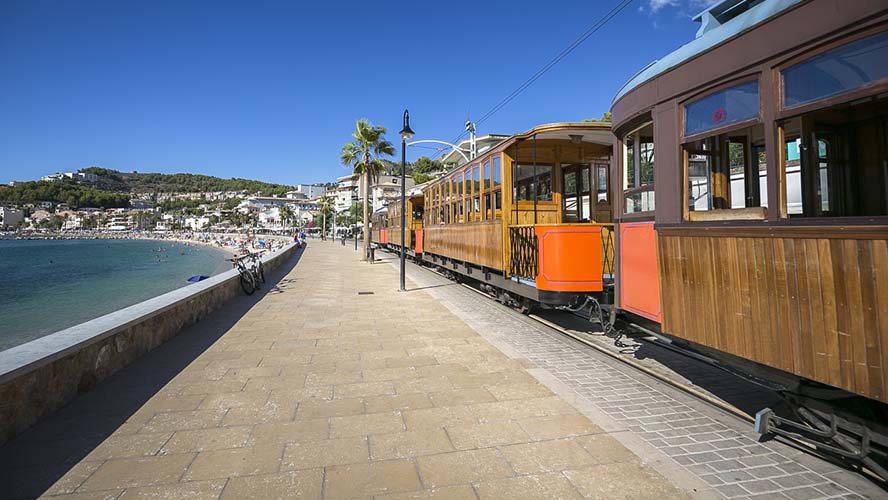
The Sóller train departs from a small station located in Plaza de España in Palma. It has been operating since 1912 and its wooden carriages conjure up details of that period. It crosses the Tramuntana mountain range for over an hour at low speed, so you can enjoy the scenery during the journey itself, just like in the past. It exits Palma through the newer part. The first images, like film stills, are dotted with almond and carob trees. At Palmanyola, the train starts to ascend towards the mountain range and goes through the Raiguer region. After Bunyola station, you start seeing pine and olive trees through the windows as well as the remains of an old textile factory and a distillery which produces palo, a typical Majorcan liqueur.
After passing by this small village with its ochre-painted houses, the train starts climbing the Tramuntana mountain range and goes through several tunnels. Although there was controversy surrounding the construction of the Sóller tunnel, it did allow to avoid the old road full of serpentine bends. When the train exits the tunnel, you start seeing the green valley of Sóller with its olive tree terraces and orange tree orchards. You cannot leave Sóller without enjoying an orange juice; choose any bar or terrace. Check out Plaza de la Constitución, with its bustling terraces.
To Port de Sóller by tram
From the Sóller train station, all you have to do is walk a few metres and take the tram which crosses l’Horta. It goes through palm and orange trees and arrives at Port de Sóller and the only beach on the north-western part of the island.
The port is also a good place for hiring a boat trip along the coast or starting a hiking route. You can also climb to the lighthouse at Cape Gros and enjoy its views.
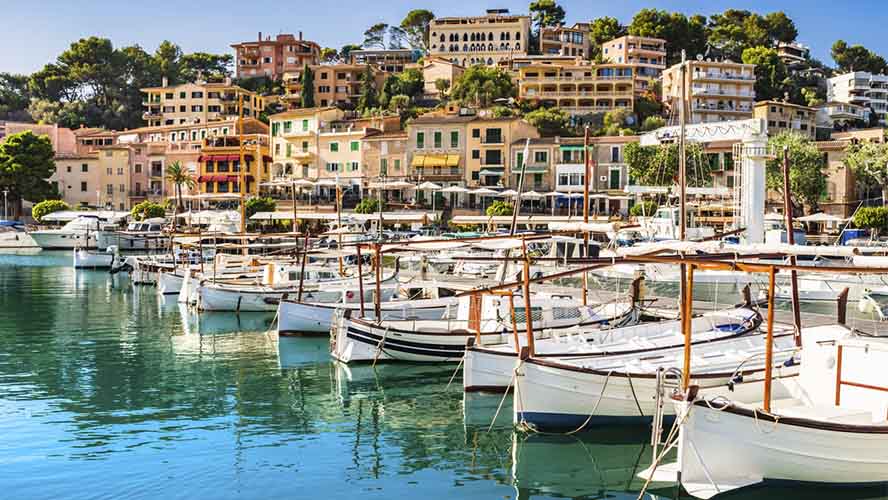
Restaurants at Port de Sóller
During your trip to Port de Sóller, you can enjoy Majorcan cuisine at any of the restaurants with pleasant terraces and unparalleled views. Here is a small selection of the main ones.
- Sabarca Restaurant. A large terrace on the maritime promenade was the place chosen by a German couple to make their dream come true and open this restaurant at Port de Sóller, which provides a combination of local, Asian and Mediterranean cuisine. Passeig Es Través, 19.
- Es Passeig. This is a small restaurant by the sea managed by the couple Marcel and Yvonne and provides international cuisine with an excellent presentation. You can choose one of its tasting menus. There are vegetarian and gluten-free options as well as children’s menus. Paseo de la Playa, 8.
- Brisas del Mar Puerto de Sóller. Specialising in roasted and barbecued meats, this restaurant combines the best Spanish, Greek and Italian cuisine with farm produce and seafood. Passeig Es Través, 7.
- Agapanto Restaurant. Dominating the entire bay, this restaurant’s terrace is surrounded by flowers which provide a unique setting. It has live music on some days and, during the summer, it has a beach club with sunbeds and a bar and massage service. Camino del Faro, 2.




































































